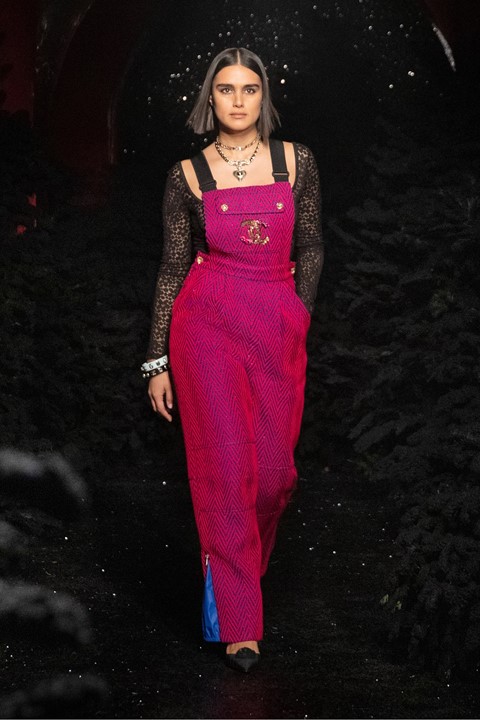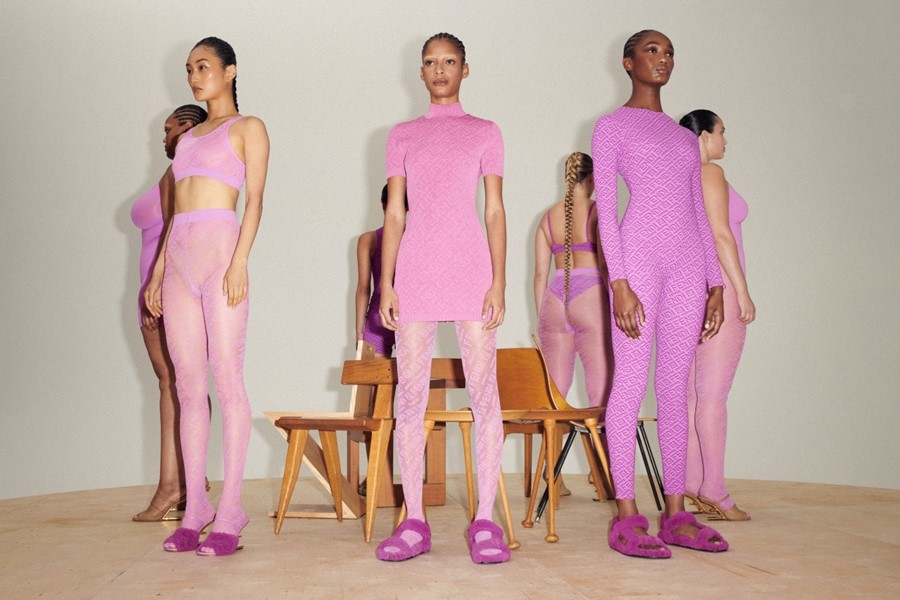Trend forecasting company WGSN predicts that comfort dressing, magenta pink and bast fibres will be big in 2022
Another year is upon us, the third in this apocalyptic decade. While the upheavals of the last 24 months have proven the futility of making predictions of any sort, the diviners at trend forecasting company WGSN have forged ahead with a list of what they foresee as being the biggest fashion trends of 2022 and beyond. The mood is optimistic, even if things are still in flux. Sustainability and eco-consciousness, brightness and positivity, trans-seasonality and inclusivity are propelling many of the changes in fashion we are likely to see. And Phoebe Philo is launching her own label this year — reason alone to rejoice. Here, we break down the main trends for 2022.
Comfort is key
Slides, mules and slippers are going nowhere, except we can soon expect them to have foot recovery technology built into their design. Even if post-lockdown dressing mandated heels, apparently all we really want is comfort after a run or a night of dancing. WGSN pinpoint brands including Hoka with their Ora recovery range of footwear, and Terrelique with its recycled plastic foot massage slide as the ones to know in this emerging arena – one that marries the undying trend for wellness with what we actually wear every day.
Savage x Fenty already revolutionised the way we think about lingerie, and comfort and inclusivity have become the key words in this changing market. 2022 is set to be all about “wearable wellbeing”, with intimates and base layers made for women at all stages in life, prioritising comfort and helping to alleviate pain. WGSN note that Adidas Terrex and Elastique Athletics are already leading the way here.

The new colour on the block
After two years of chilly hues – Neo Mint (2020) and AI Acqua (2021) – 2022 is set to be defined, colour-wise, by the saturated magenta Orchid Flower. According to WGSN, as we adjust post-pandemic “vivid, stimulating colours will have strong appeal, inciting feelings of optimism and vigour.” Fashion insiders will have noticed the colour already on the Autumn/Winter 2021 catwalks of Chanel and Dries Van Noten, and anyone who binged Squid Game will recognise it as the colour of the guards’ uniforms. “Orchid Flower has an intense, hyper-real and energising quality that stands out in both real-life and digital settings,” says Jenny Clark, head of colour at WGSN. “We selected this particular upbeat magenta because its hue and chroma level embodied trans-seasonality and gender-inclusivity and had a broad and long-lasting appeal.” Look out for the hues in the Fendi x Skims collaboration, S/S22 collections from Alberta Ferretti to MSGM and in Pre-Fall 22 collections including Versace and Oscar de la Renta.
Eco-conscious fabrics
Bast fibres – that’s linen, hemp, ramie and jute – are tipped to be big news in the coming year, lauded for their biodegradability and much lower environmental impact than traditional cotton. The denim industry is reportedly one of the biggest polluters in fashion, so a move to more sustainable fibres like these is long overdue.
“It’s important to understand that it is still early days for hemp and for the denim industry,” says Lorna Hall, director of fashion intelligence at WGSN. “The big brands are putting the work in to create long-term certifiable supply chains that ensure it is processed legally and correctly to enable them to scale up the environmental benefits that its natural potential promises for the future.” Kontoor Brands, owners of Wrangler and Lee, are already putting in that important wok, building a homegrown hemp supply chain in the US that will eventually reduce their carbon footprint – an added bonus on top of hemp’s already more sustainable profile. Other brands incorporating hemp into their products include Levi’s and Tommy Hilfiger. “We are beginning to see it come through mostly in men’s products but we expect that to move across the market,” says Hall.
Elsewhere, brands are meeting consumer desire for sustainability with a cluster of solutions aimed at reducing the environmental impact of our clothes, whether it’s a bio-based dye processed from black algae waste or carbon-impact labelling on garments.

Athleisure for the beach
Finally, athleisure is evolving to include the admittedly less-than-covetable-sounding ‘rash vests’, items typically worn by surfers. According to WGSN, these will be “your new beach, swim and outdoor essentials.” With Covid-19 forcing us to be outdoors more than ever, brands are matching the growing appetite for sports and outerwear with performance-geared, streamlined items that protect from the sun and look good, too. And with increasingly wild fluctuations in climate over the last year, enhanced UV protection and warmer performance layers in our clothes are surely a must.
